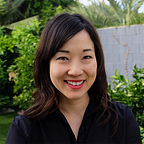So You Want to Be a Business Designer?
You may know IDEO’s role in shaping the process known as design thinking and how that informed the first Apple mouse, the shopping cart, and the insulin pen for Type-1 diabetes.
But fewer know about business design, a discipline at IDEO that has formed over the past decade. There are a few dozen of us across the company, and our role is to balance the needs of users with the needs of our clients. In IDEO’s Venn diagram, innovative solutions hit the sweet spot where viability, desirability, and feasibility overlap. Business designers, to put it simply, design for viability.
As a leader of business design in San Francisco, I help find new talent. During the interview process, I field many questions from applicants. They will often inquire about a business designer’s role on teams:
Are business designers relegated to “crunch the numbers” in a cubicle while the rest of the team brainstorms new ideas? Are they considered designers like other members of the team?
The brave will put it all on the table and fearlessly ask, “So, what do you actually do?!”
A few quick answers:
Yes, you do really design as a business designer! Although you are expected to know your way around an income statement and a spreadsheet, you won’t be treated like a human calculator.
And yes, you not only get to brainstorm with your team, you get a say in everything the team does, from the industrial design of a product to an interaction in an app. The reverse is also true! Other designers get a say in everything you produce, whether that’s challenging your assumptions around customer adoption or suggesting improvements in your experiment design.
What we do day-to-day? At the beginning of a project, business designers often translate what the client wants — say, more repeat transactions — into generative design challenges for our teams. We might rephrase this particular need into a brainstorm question like: How might we encourage loyalty in our existing customers?
During the research phase of a project, designing for viability could mean creating experiments and prototypes that help answer a question we have about customer segments or brand positioning. In a project’s final stages, business designers help craft the story of how our design recommendation fits into a company’s overall strategy, the underlying business model, and any implementation risks.
Now onto the most popular question we’re asked by potential applicants:
What makes a great business designer?
Of course, there’s no simple answer, but there are qualities that help determine if a candidate might be a perfect fit. Here are three things we look for in applicants:
1. PROOF
Business designers are generally the only business mind on an IDEO team, which is why we look for deep expertise in one or more areas when considering candidates. You need to have experience to draw upon and an ability to tackle challenges with conviction. You’ll need to wear many hats throughout a project, and we want to be confident that you’re ready to do so.
Some questions we might ask:
- How are you adapting your work to changes in your industry?
- Have you launched a new product or service? How did it go?
- How would you create financial projections for a new product?
2. POTENTIAL
IDEO projects can be highly ambiguous, without a clearly defined process or toolkit to help your team get to the finish line. Business designers need to help determine what work should be done to explore, test, refine, and recommend a final solution. In your prior career, you may not have had much room to do things as you would like, whether that’s due to team, budget, or time. With that in mind, we may share a challenge we’re facing and ask you to work through it with us.
To measure potential, we’d want to know:
- Do you embrace the opportunity to develop your own process?
- Can you set up parameters that feel defined but not overly restrictive?
- Do you make things real and tangible, or are you more theoretical?
3. PASSION
IDEO gravitates to T-shaped people — those who not only have impressive backgrounds, but also have genuine and unique personal interests. We like people who connect with others and make work better by identifying linkages and inspiration others might not see, something we call analogous inspiration.
One recent and unlikely burst of inspiration, for example, came from interviewing a coworker who trained to be a professional dancer. Why? Because her experience training for a dance career as a teenager might spark new ideas for the team’s design challenge, which was to better prepare students for college.
Getting at softer skills that matter:
- What excites you?
- What problems in the world do you want to solve?
- What would you uniquely bring to our culture?
Want to know more about business design? Let us know what’s on your mind in the comments, or shoot a question to us at askBxD@ideo.com. We will post answers to some of the questions we receive.
If being a business designer sounds like a role made for you, reach out via IDEO’s career page — we’d love to hear from you!
